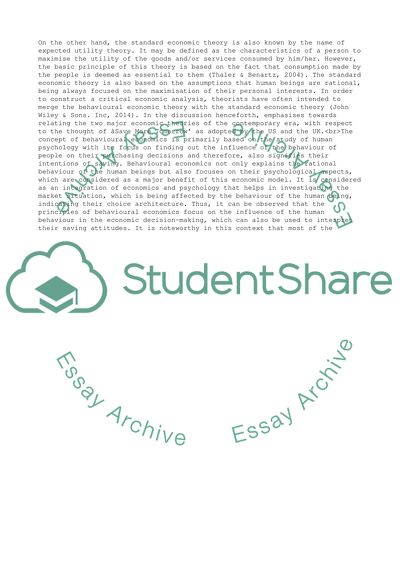Cite this document
(The concept of choice architecture and the Save More Tomorrow schemes Essay, n.d.)
The concept of choice architecture and the Save More Tomorrow schemes Essay. https://studentshare.org/macro-microeconomics/1853234-the-concept-of-choice-architecture-and-the-save-more-tomorrow-schemes-relating-to-behavioural-economics
The concept of choice architecture and the Save More Tomorrow schemes Essay. https://studentshare.org/macro-microeconomics/1853234-the-concept-of-choice-architecture-and-the-save-more-tomorrow-schemes-relating-to-behavioural-economics
(The Concept of Choice Architecture and the Save More Tomorrow Schemes Essay)
The Concept of Choice Architecture and the Save More Tomorrow Schemes Essay. https://studentshare.org/macro-microeconomics/1853234-the-concept-of-choice-architecture-and-the-save-more-tomorrow-schemes-relating-to-behavioural-economics.
The Concept of Choice Architecture and the Save More Tomorrow Schemes Essay. https://studentshare.org/macro-microeconomics/1853234-the-concept-of-choice-architecture-and-the-save-more-tomorrow-schemes-relating-to-behavioural-economics.
“The Concept of Choice Architecture and the Save More Tomorrow Schemes Essay”. https://studentshare.org/macro-microeconomics/1853234-the-concept-of-choice-architecture-and-the-save-more-tomorrow-schemes-relating-to-behavioural-economics.


